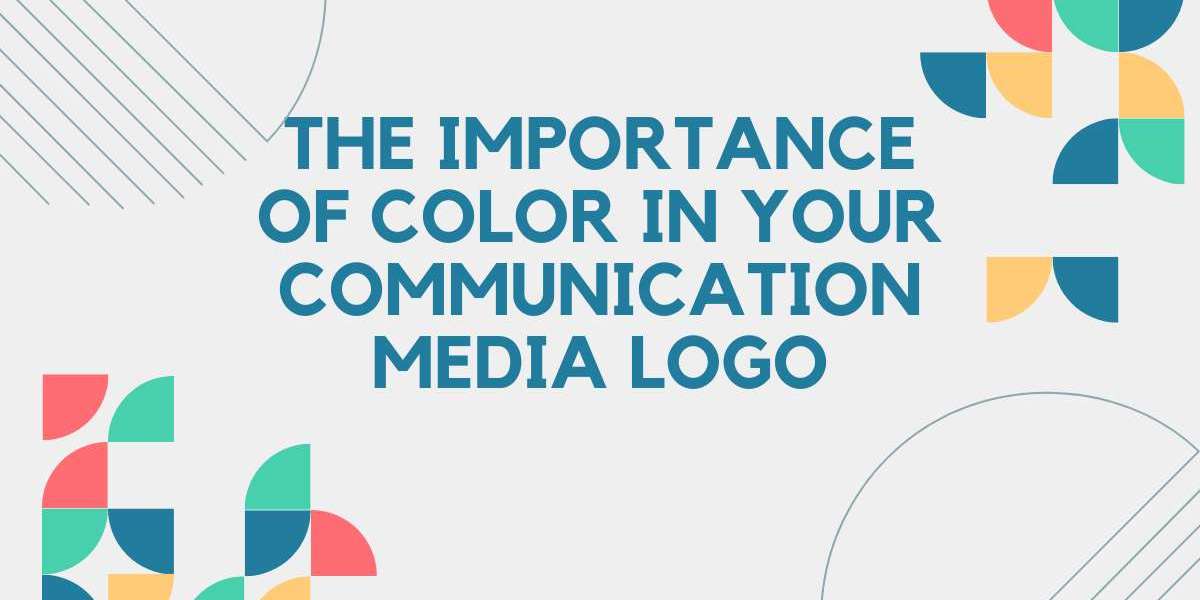Introduction
A communication media logo should resonate with your target audience and convey your message clearly. In today's visually driven world, a logo serves as a crucial representation of a brand's identity. For communication media companies, where clarity and connection are paramount, a well-crafted logo can make a significant impact. Among the various design elements that contribute to a logo's effectiveness, color plays an especially vital role. This blog explores the importance of color in your communication media logo, the psychology behind color choices, and how to effectively use color to enhance brand identity.
Understanding the Role of Color in Logo Design
Color is not just an aesthetic choice; it is a powerful communication tool. It conveys emotions, influences perceptions, and creates associations. The right color palette can enhance your brand message, foster emotional connections, and make your logo more memorable. Here are several ways color contributes to effective logo design.
1. Brand Recognition
Color helps in creating a visual identity that consumers can recognize and remember. Brands like Coca-Cola, Starbucks, and McDonald's are perfect examples of how effective color choices enhance brand recognition. When designing a communication media logo, consider how your color choices can create a lasting impression.
2. Emotional Resonance
Different colors evoke various emotional responses. For example, blue often conveys trust and reliability, making it a popular choice for financial and communication brands. Red can signify energy and urgency, which may be suitable for a media company focused on breaking news. Understanding the emotional implications of colors can guide you in choosing the right hues for your logo.
3. Differentiation from Competitors
In a saturated market, distinguishing your brand from competitors is essential. A unique color palette can set your logo apart and make it instantly recognizable. Research your competitors to see their color choices, and find a palette that reflects your brand identity while standing out in your industry.
4. Cultural Significance
Colors can have different meanings in various cultures. For example, white is associated with purity in Western cultures but can symbolize mourning in some Eastern cultures. If your communication media company operates in a global market, it’s crucial to consider the cultural implications of your color choices.
5. Consistency Across Platforms
A well-chosen color palette ensures consistency across all branding and marketing materials, from your logo to your website and social media channels. This consistency builds brand trust and makes your brand more recognizable.
The Psychology of Color
Understanding the psychology behind colors can significantly influence your logo design choices. Here’s a breakdown of some common colors and their psychological associations.
1. Blue
- Associations
Trust, security, professionalism
- Usage
Often used by financial institutions, tech companies, and communication brands to instill confidence.
2. Red
- Associations
Energy, urgency, passion
- Usage
Frequently used in food and entertainment brands to evoke excitement and draw attention.
3. Green
- Associations
Growth, health, tranquility
- Usage
Ideal for brands related to health, wellness, and environmental issues.
4. Yellow
- Associations
Optimism, creativity, warmth
- Usage
Used to grab attention and create a sense of happiness, making it effective for brands that focus on positivity.
5. Black
- Associations
Elegance, sophistication, power
- Usage
Common in luxury brands and companies wanting to convey a sense of authority.
6. Purple
- Associations
Creativity, luxury, wisdom
- Usage
Often used by brands in creative industries or those wanting to project a premium image.
7. Orange
- Associations
Playfulness, enthusiasm, adventure
- Usage
Suitable for brands that want to convey a fun and energetic personality.
Tips for Choosing the Right Colors for Your Communication Media Logo
Selecting the right colors for your logo requires careful consideration. Here are some tips to guide your decision-making process.
1. Define Your Brand Personality
Start by defining your brand personality. Are you playful, professional, innovative, or traditional? Your color choices should reflect the essence of your brand.
2. Consider Your Audience
Understand your target audience and their preferences. Research color trends within your industry and consider how your audience may respond to different colors.
3. Create a Color Palette
Limit your color palette to two or three primary colors. This simplicity will make your logo more versatile and easier to reproduce across various platforms.
4. Test Different Combinations
Experiment with different color combinations to see which resonates best with your brand identity. Tools like Adobe Color or Coolors can help you visualize different palettes.
5. Seek Feedback
Once you have a few design options, seek feedback from colleagues, clients, and friends. Their insights can provide valuable perspectives on how your logo will be perceived.
FAQs
- Why is color important in logo design?
- Color is crucial in logo design because it helps convey your brand's message, evokes emotions, and enhances brand recognition. It plays a significant role in how consumers perceive your brand.
- How many colors should I use in my logo?
- It’s best to limit your logo to two or three primary colors. This ensures simplicity and versatility, making it easier to reproduce across various platforms.
- What are the most effective colors for communication media logos?
- Blue and green are popular choices for communication media logos, as they convey trust and reliability. However, the best color for your logo will depend on your brand identity and target audience.
- Can I use trendy colors for my logo?
- While trendy colors can make your logo feel modern, they may not stand the test of time. It’s important to choose colors that align with your brand identity and will remain relevant in the long term.
- How do cultural differences affect color choices?
- Colors can have different meanings in different cultures, so it’s essential to consider the cultural context of your target audience. Research the significance of colors in the cultures you wish to engage with.
- How can I ensure consistency in my logo's colors?
- To maintain color consistency, create a brand style guide that outlines your color palette, including color codes (RGB, CMYK, Hex). This guide will serve as a reference for all branding materials.
- What should I do if my logo doesn’t resonate with my audience?
- If your logo doesn’t resonate with your audience, consider re-evaluating your color choices and overall design. Seek feedback and be open to making changes to align better with your brand identity.
- Is it worth hiring a professional designer for my logo?
- Hiring a professional designer can ensure that your logo effectively communicates your brand message and resonates with your audience. They have the expertise to create a visually appealing and meaningful logo.
- How can I test my logo colors?
- You can test your logo colors by conducting surveys or focus groups. Share different logo variations and gather feedback on which colors resonate best with your target audience.
- What if my logo needs to change colors for different uses?
- Consider creating multiple versions of your logo for different applications. For example, a full-color logo for digital use and a monochrome version for print materials can maintain your brand identity while adapting to various contexts.
Conclusion
In conclusion, color plays a pivotal role in the effectiveness of your communication media logo. By understanding the emotional and psychological impact of colors, you can make informed choices that enhance your brand identity and resonate with your audience. As you design your logo, remember to consider your brand personality, target audience, and cultural significance to create a compelling and memorable visual identity. Ultimately, the right color palette can set your communication media company apart and foster a lasting connection with your clients.



